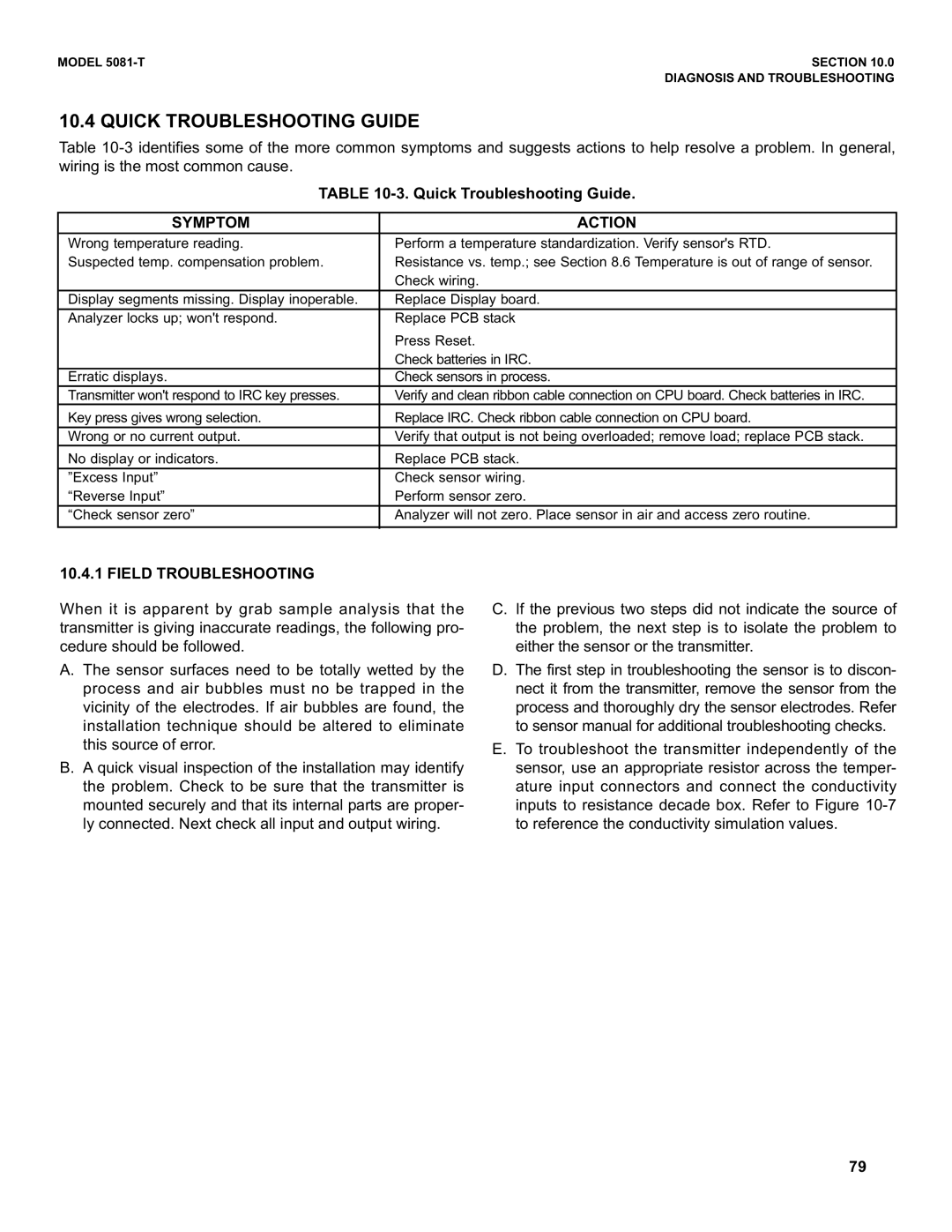MODEL | SECTION 10.0 |
| DIAGNOSIS AND TROUBLESHOOTING |
10.4 QUICK TROUBLESHOOTING GUIDE
Table
TABLE 10-3. Quick Troubleshooting Guide.
SYMPTOM | ACTION |
Wrong temperature reading. | Perform a temperature standardization. Verify sensor's RTD. |
Suspected temp. compensation problem. | Resistance vs. temp.; see Section 8.6 Temperature is out of range of sensor. |
| Check wiring. |
Display segments missing. Display inoperable. | Replace Display board. |
Analyzer locks up; won't respond. | Replace PCB stack |
| Press Reset. |
| Check batteries in IRC. |
Erratic displays. | Check sensors in process. |
Transmitter won't respond to IRC key presses. | Verify and clean ribbon cable connection on CPU board. Check batteries in IRC. |
Key press gives wrong selection. | Replace IRC. Check ribbon cable connection on CPU board. |
Wrong or no current output. | Verify that output is not being overloaded; remove load; replace PCB stack. |
No display or indicators. | Replace PCB stack. |
”Excess Input” | Check sensor wiring. |
“Reverse Input” | Perform sensor zero. |
“Check sensor zero” | Analyzer will not zero. Place sensor in air and access zero routine. |
|
|
10.4.1 FIELD TROUBLESHOOTING
When it is apparent by grab sample analysis that the transmitter is giving inaccurate readings, the following pro- cedure should be followed.
A.The sensor surfaces need to be totally wetted by the process and air bubbles must no be trapped in the vicinity of the electrodes. If air bubbles are found, the installation technique should be altered to eliminate this source of error.
B.A quick visual inspection of the installation may identify the problem. Check to be sure that the transmitter is mounted securely and that its internal parts are proper- ly connected. Next check all input and output wiring.
C.If the previous two steps did not indicate the source of the problem, the next step is to isolate the problem to either the sensor or the transmitter.
D.The first step in troubleshooting the sensor is to discon- nect it from the transmitter, remove the sensor from the process and thoroughly dry the sensor electrodes. Refer to sensor manual for additional troubleshooting checks.
E.To troubleshoot the transmitter independently of the sensor, use an appropriate resistor across the temper- ature input connectors and connect the conductivity inputs to resistance decade box. Refer to Figure
79
